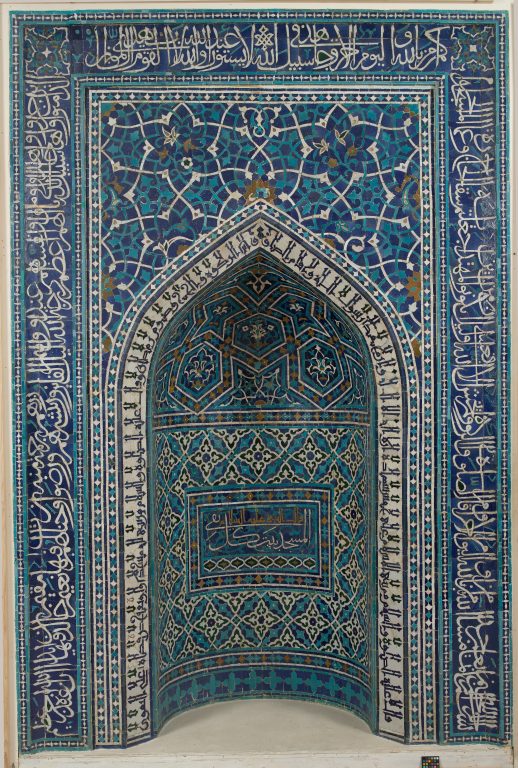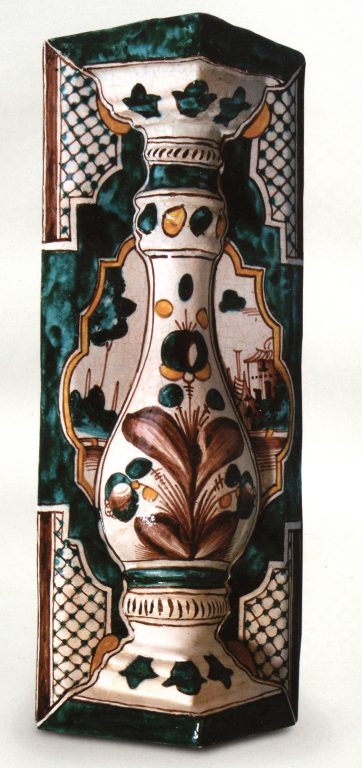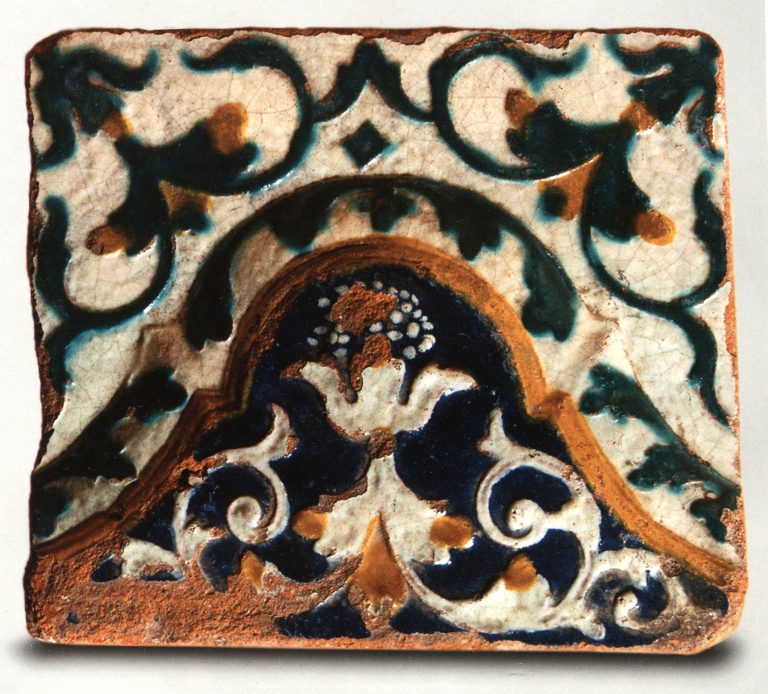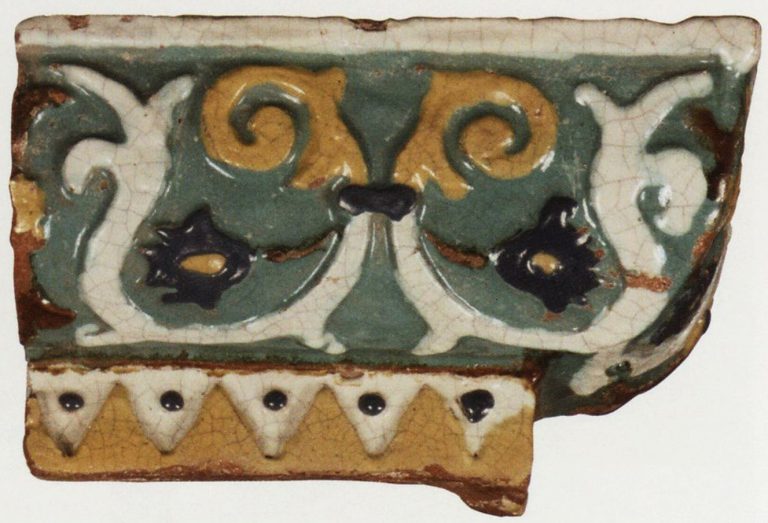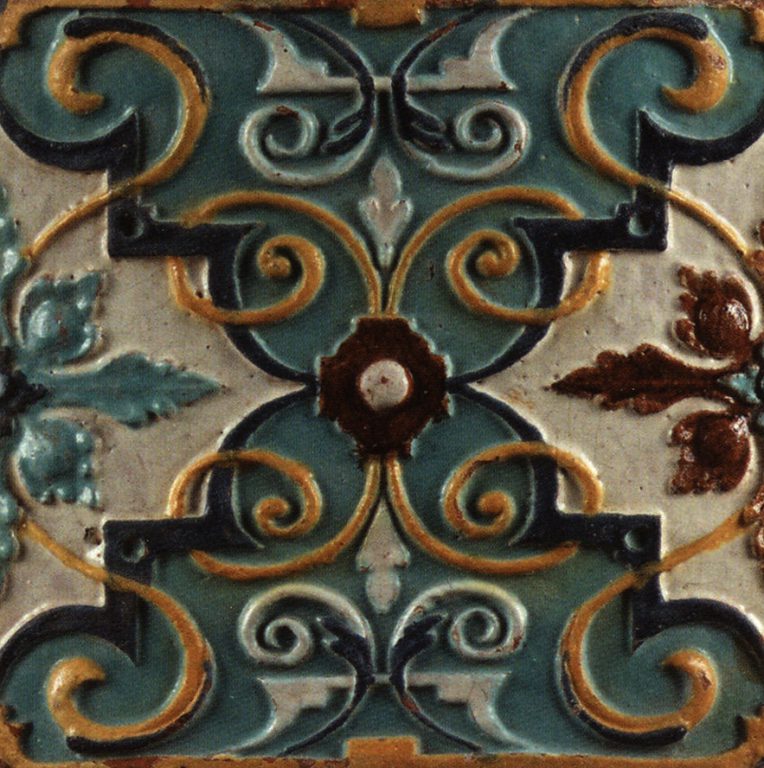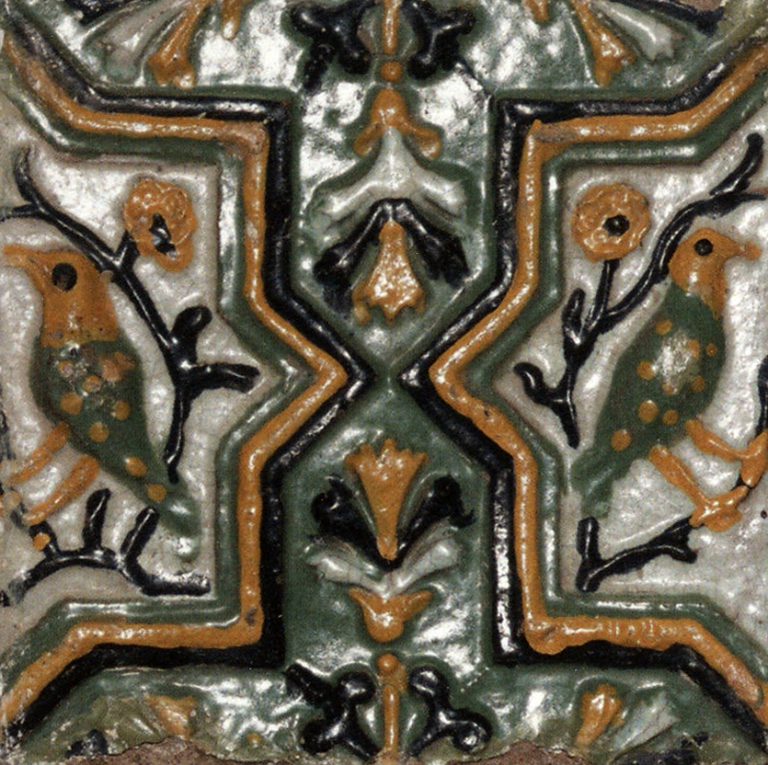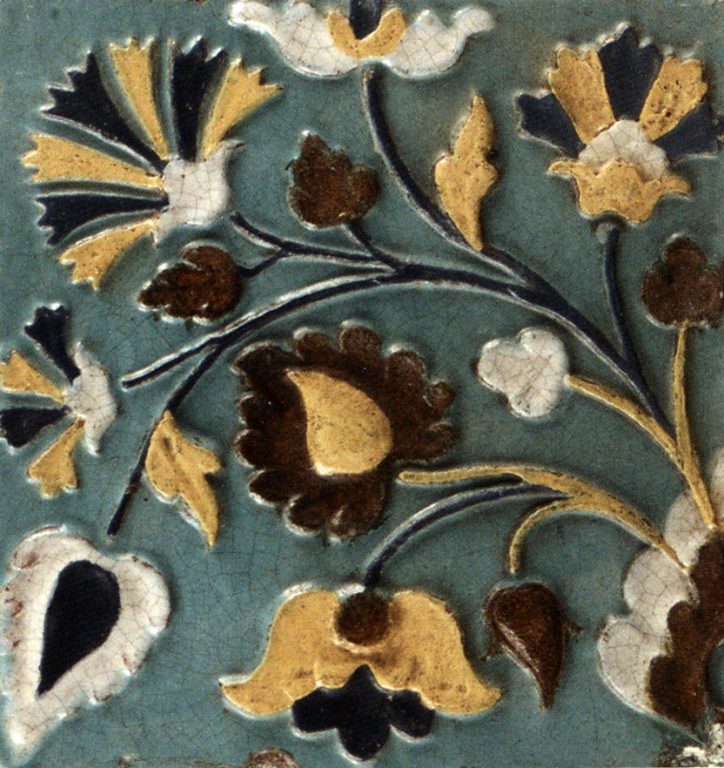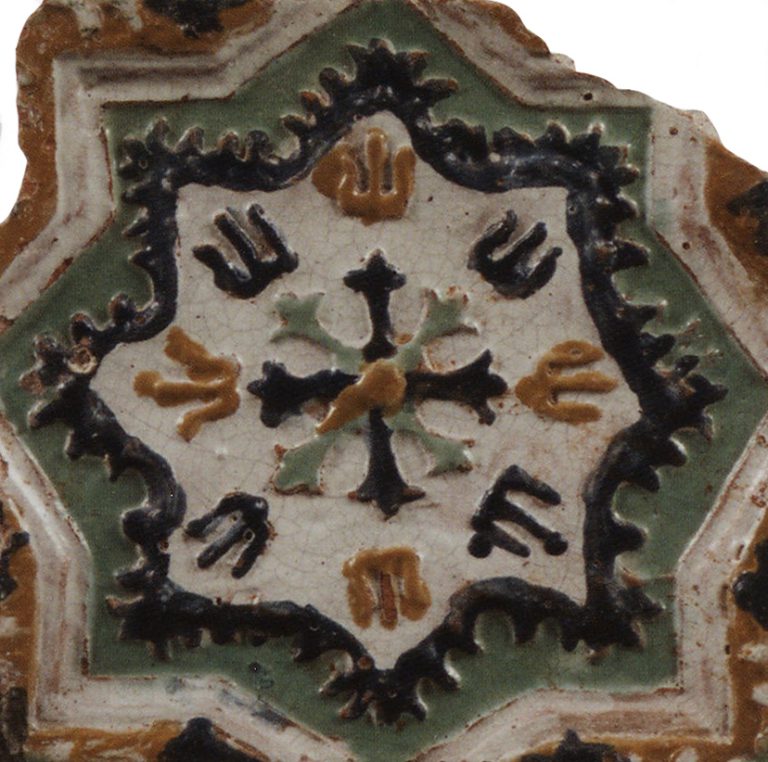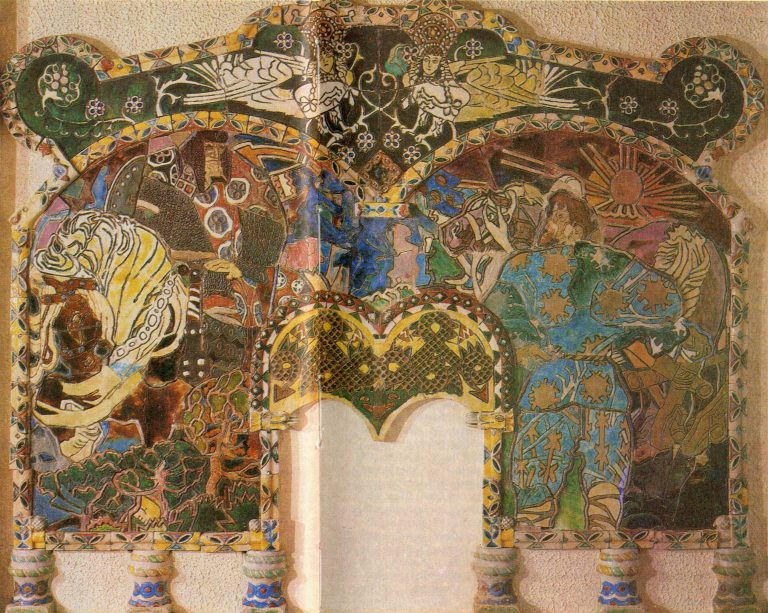

Iran
-
Object
-
Type of arts & crafts
-
MediumMosaic of polychrome-glazed cut tiles on stonepaste body; set into mortar
-
SizeH. 135 1/16 in. (343.1 cm) W. 113 11/16in. (288.7cm) Storage box: 99 x 41 1/2 in. (251.5 x 105.4 cm) Wt. 4,500 lbs. (2041.2 kg)
-
Geography detailsFrom
Town Isfahan,
Iran -
Country today
-
DateA.H. 755/A.D. 1354-55
-
Type of sourceDatabase “Metropolitan Museum of Art”
-
Fund that the source refers toMetropolitan Museum of Art
-
The most important element in any mosque is the mihrab, the niche that indicates the direction of Mecca, the Muslim holy pilgrimage site in Arabia, which Muslims face when praying. This example from the Madrasa Imami in Isfahan is composed of a mosaic of small glazed tiles fitted together to form various patterns and inscriptions. Qur’anic verses run from the bottom right to the bottom left of the outer frame; a second inscription with sayings of the Prophet, in Kufic script, borders the pointed arch of the niche; and a third inscription, in cursive, is set in a frame at the center of the niche. The result is one of the earliest and finest surviving examples of mosaic tile work.
Along the frame, a reference to the five pillars of Islam is written in kufic: “He [the Prophet], blessings and peace be upon him, said: “Islam is built on five attestations: there is no god but God and Muhammad is the Messenger of God, he established prayer and the giving of alms and the pilgrimage and fasting of [the month of] Ramadan.”


